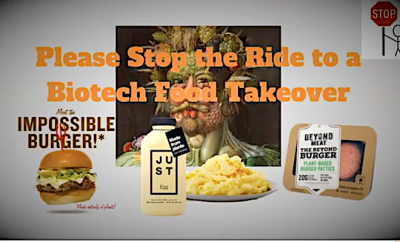 Activist Post
Activist Post
GMO
Dear Farmers: U.S. is Now Importing Organic Corn to Satisfy Consumer Demand
by Heather Callaghan, Activist Post.com:
There are three things driving a surge in organic imports:
- U.S. farmers have been systematically pushed into growing mostly GMO crops; grown primarily for fuel, animal feed and cheap processed foods. Russia even used our food supply as an example for the EU to dump us and join them instead.
- U.S. consumers are not only demanding fresh, organic produce as well as non-GMO convenience foods – but also want meat, dairy and eggs from animals that were fed non-GMO or organic feed.
- Other countries primarily grow non-GE crops, and plenty of organic. They’ve got the goods and they reap the benefits of trade.
This is ridiculous, as the U.S. could not only use a valuable export, but could honestly use a supportive, in-house product. Yet again, we find ourselves outsourcing for staples. Shouldn’t our own farmers be benefiting from this rise in demand coming from their country? Yet again, farmers have been tricked and kicked by the very companies with which they sign agreements.
U.S. consumers are coming into awareness about how their food affects their health and want superior products, which sadly, aren’t always available here…yet.
An analysis of U.S. trade data released Wednesday by the Organic Trade Association and Pennsylvania State University shows a spike in corn from Romania and soybeans from India. The chief executive officer of OTA is prompting farmers that the market is open for converts. She called it a “help-wanted” sign for farmers and said, “There are market distortions that are pretty striking.” [Also see: Study Quantifies Market Value of Nature’s Farming Services]
Bloomberg Business reports the bulk of the imports are to feed U.S. cattle and poultry:
As a result, imports to the U.S. of Romanian corn rose to $11.6 million in 2014 from $545,000 the year before. Soybean imports from India more than doubled to $73.8 million.
Sales of foods certified by the U.S. as free of synthetic chemicals or genetic engineering reached $35.9 billion in 2014, an 11 percent increase over 2013 and about 5.1 percent of U.S. grocery spending. The organic sector’s average annual growth of about 10 percent is triple that of overall food sales, according to U.S. Department of Agriculture and trade association data.
[…]
The four years of records show rapidly growing trade relationships. In 2014, U.S. organic exports were $553 million, almost quadruple the 2011 total. Imports last year were $1.28 billion, led by $332.5 million of organic coffee.
Supply farms were forced to seek foreign sources with the rapid demand spikes, as 90 percent of U.S. corn and soy are genetically engineered, a definite no-go for organically raised animals, animal by-products and produce. Some organic feed companies have recently seen sales quadruple and sought supplies from Canada. Read Bloomberg for more figures and some tug-of-war about future markets and whether or not it’s worth it to grow organic in America.
And interesting turn of events since yesterday’s Bloomberg report: Tom Vilsack, U.S. Secretary of Agriculture announced that the government would offer support to boost the U.S. production of organic.
While expressing an interest to help small family farms and boost the rural economy, he told Reuters:
There’s been significant expansion and interest in organics. Both the number of producers expanding and the sales expanding are an indication that this is a fast-growing aspect of agriculture.
A peculiar announcement considering Vilsack’s past infatuation and staunch defense of biotech. I don’t buy those intentions at all. Not with Agenda 21 tactics, a crumbling food system and economy, corporations that drain and frack the daylights out of drought-stricken aquifers, states that only vote yes to label GMOs in the far-off future, and the DARK Act looming in Congress. Those things tell me to be vigilant and not to get too excited.
On a lighter and more productive note, we can keep up that consumer demand because, right now, it cannot be ignored. On the other hand, don’t forget to reach out to farmers, but also demand ways for them to make a living using better methods – there isn’t incentive to do so currently, in fact, quite the opposite. Let’s not let them fall behind the market curve. Maybe we could bring this news to Farm Aid’s attention so they can focus on helping their family farmers who wish to convert but without losing the farm.
Unfortunately, there are stifling obstacles that stand in the way of simply switching to an organic farm. More so if the “DARK Act” passes through Congress. (Hint: it punishes non-GMO farmers with fines and makes them produce labels!) For one thing, it’s not about simply switching seed, and farmers are in a sense, punished if they use natural methods. As one recent study pointed out, it would be economically better to use nature’s free services and organic methods but only if it were allowed to be economically feasible!













